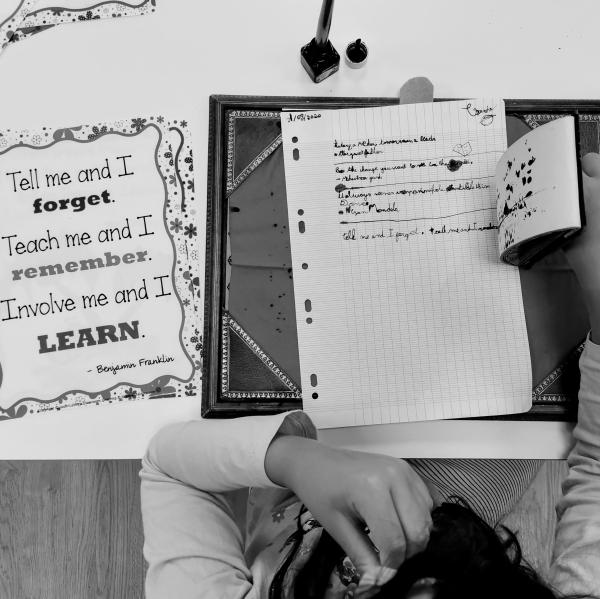Bilingual school, multilingual
At Les Tournesols, children don't learn two languages but in two languages. Throughout the day, two adults, one French-speaking and the other English-speaking, accompany the child. During its activities, two languages are thus offered to the child.
Why another language so soon?
Between the ages of 3 and 6, the child is in the process of learning language, and then reading/writing around age 5. Learning a "different" language fits into this language learning perspective and again optimizes this sensitive period of the child. The child also understands that there are several ways to express and perceive the world around them.
Who speaks what language? When?
English-speaking educators or assistants speak in English, French-speaking in French. This simple and clear rule allows children to quickly find their place. This quickly becomes an obvious solution for all children. Stable language-reference patterns are recommended by linguists for multilingual environments.
Do we need to worry that we don't speak English at home?
The most important thing is to be clear and consistent with rules. Learning a "different" language should follow the same principles of order and method as any other teaching and will not in any way bother the child. There is no need to change the habits at home to make a "bridge" on this other language, English or French depending, if it is not already the case at home.

Our commitment
We are always looking to maximize the English immersion of children while respecting Montessori pedagogy. At the minimum, we commit to supporting your child half the time with a native-speaking adult. But it is often a full-time person, or even one and a half people depending on the classes and the years.

Bilingual School vs. Bilingual Students
The development of each child depends on many factors (family environment, natural propensity to express oneself, proportion of English-speaking children that year...). Evolving and working in a bilingual environment does not necessarily mean becoming bilingual after three years.